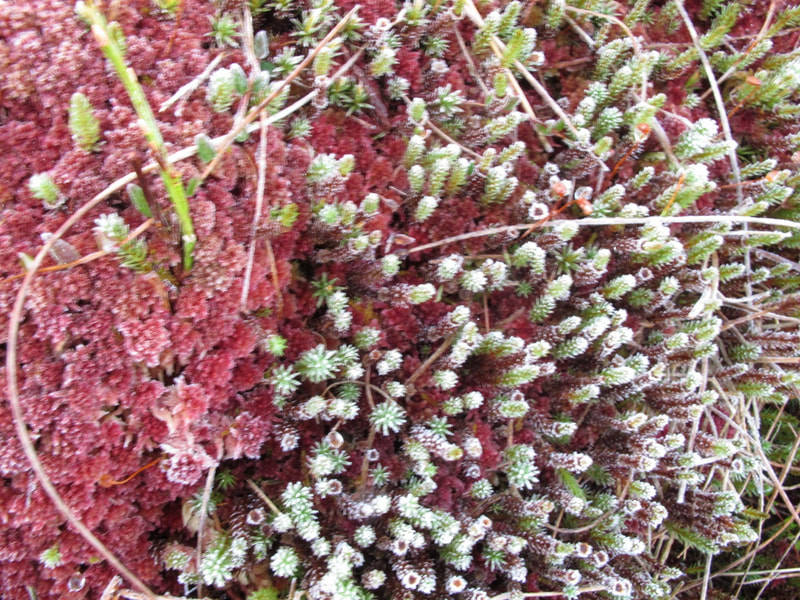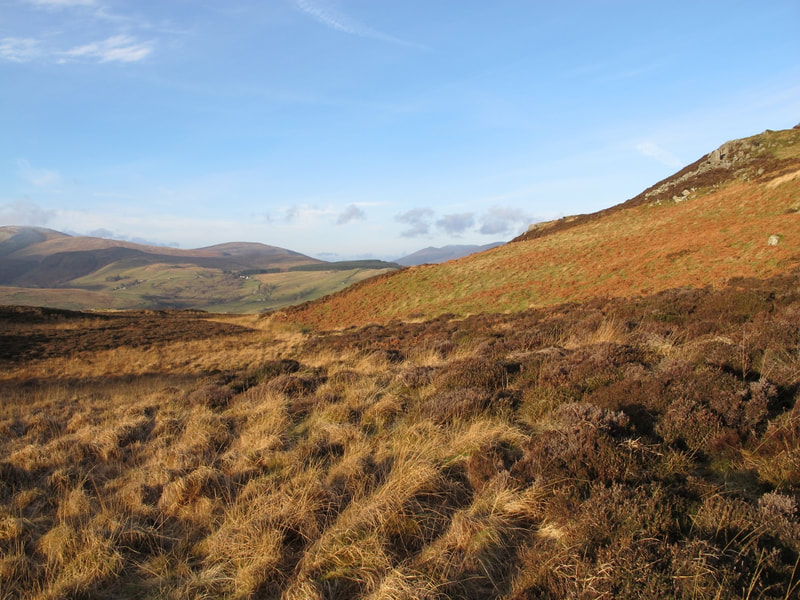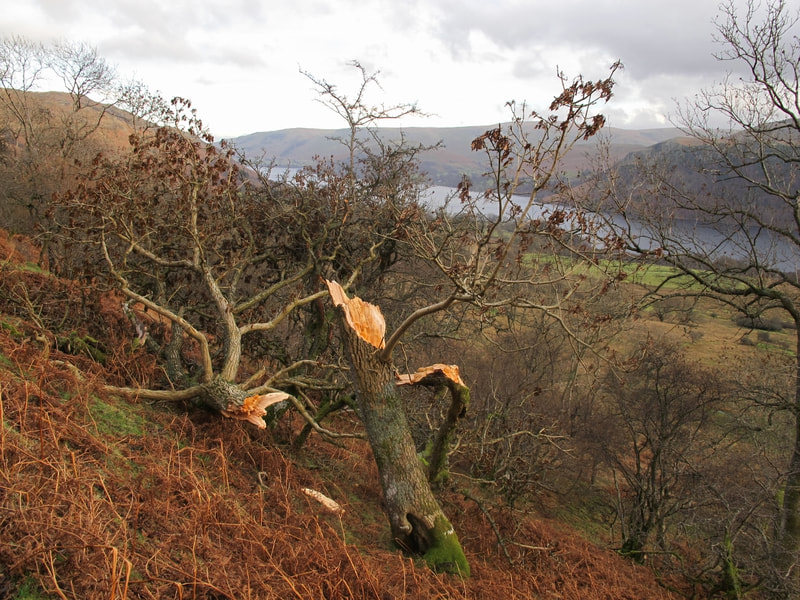 Dowthwaite Head and Great Dodd from Gowbarrow Fell
Dowthwaite Head and Great Dodd from Gowbarrow Fell To the north, toward Blencathra, sunlight on snow. Over Place Fell, a roiling mass of cloud. Vistas from Gowbarrow Fell, a sweep of heather and tussocks where the Hodgson’s Herdwicks graze, and at my feet the flora of the fells toward the winter solstice.
High-stepping through heather I go, through grassy tussocks, between hummocks of sphagnum mosses, ericas, cross-leaved heath and crowberry. On the cranberry trail, with creeping strands of tiny leaves over sphagnum moss.
One autumn, below Great Meldrum, cranberries on trailing stems spread lavishly over rippling mounds of sphagna. I have never seen so many ‘wild, freeborn cranberries.’ The tiny flowers are exquisite.
Over a wobbly stile and onto the open fell, named Riddings Plantation. Skirting crags and down a saturated mossy slope to pick up a track below Norman Crag to Dockray.
Somewhere along this contouring path, between Near Swan Beck, Middle Swan Beck and Far Swan Beck, butterwort and bird’s- eye primrose should reappear in spring. Water pours off the fell-side and the sound of one beck gives way to the clamour of the next. A shattered tree thick with ash keys, a freshly storm-riven tree above Ullswater. Dead wood habitat is a resource for insects , so trees rot where they fall. Invertebrates bore into dead branches. Probe a finger into a hole and it disappears!
In early autumn cranberries are mottled and brownish. On a frosty day toward the winter solstice, here are beautiful glossy red fruit.
Sphagnum moss is far more than an aesthetic. Soaking up water, it slows the release of water from the fells and so helps prevent flooding. It acts as a fire-break in a heat wave. And it stores carbon.













 RSS Feed
RSS Feed